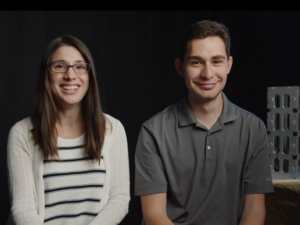I’m gazing ahead at a seemingly endless stretch of farmland. A mahogany colored horse gallops ahead of me, and another approaches on my right. So I pick up my speed—but then have to abruptly veer hard to the left to avoid crashing into a tree.
This semi-surreal scene isn’t a dream, it’s my first experience testing out a virtual reality game. That entails sitting on an exercise bike at VirZoom, a new VR startup in Cambridge’s Harvard Square, with an Oculus Rift headset strapped to my face and a very open mind.
Before we delve into the details, let’s get one thing straight: VirZoom isn’t just developing a game for mere entertainment’s sake—it has a health-driven mission. Anyone who exercises knows that distractions, like popping in your earbuds and listening to an energizing playlist or watching your favorite TV sitcom, can help—but only to a point. Because while these options may make the time pass faster, they don’t necessarily motivate you (be honest: when you get caught up in an episode of The Kardashians, your pace on the elliptical gets significantly slower).
It’s a problem that serial entrepreneur and former venture capitalist Eric Janszen has been eager to address for quite some time. His solution? A virtual reality game for an exercise bike that makes physical activity so fun, you forget you’re burning calories. And with some of the creative minds behind popular games like Guitar Hero, Rock Band and the Wii Remote Controller on board, they just might have a shot. Cofounder/CTO Eric Malafeew, who was formerly the Chief Architect at Harmonix Music Systems, boasts more than 20 years of experience in game design, as well as robotics control systems engineering.
A key reason why virtual reality has yet to hit the mainstream yet is that users have suffered from nausea when using it. But VirZOOM has dodged this side effect with its patent-pending motion control technology.
Janszen, founder and president of Bedford-based online financial advisory company iTulip, has had VR on the brain for years. A key reason why the technology has yet to hit the mainstream yet is that users have suffered from disorientation and nausea when using it. Janszen explained that these unpleasant symptoms—which resemble motion sickness—stem from the visually-induced perception of motion, which is at odds with the fact that you’re actually stationary. According to this theory, sickness can be minimized when the sensory inputs inducing self-motion are in agreement with one another. Field of view, viewing angle, and mismatched motion can also play a part in the queasiness. So can poor resolution on the animation.
VirZoom, which was officially founded in March, has been able to overcome a lot of these drawbacks with its patent-pending motion control technology. That’s because users are cycling on a stationary bike while using it. A series of sensors attach to various parts of the machine: One on the back wheel measures your speed, while another on the front wheel responds to your direction. After plugging them in to your computer through a USB port, you would simply download the VirZoom software and be ready to play. Last month, VirZoom banked $1.8 million in initial funding from an array of investors via the iTulip Investment Group. Among VirZoom's investors is Kurt Harris, founder of Wisconsin-based radiology imaging company Advanced Imaging.
Having no experience with virtual reality, I was hesitant as I hopped onto the bike and secured the goggles against my eyes. One of the worlds I explored resembled a Colorado landscape at sunset. Trotting along on a canyon trail, I notice there are no other horses here—just me and nature. My steering is poor as I attempt to get my bearings, and as I near the edge of the canyon trail I mention aloud that I happen to be deathly afraid of heights. Luckily, the VirZoom team assures me that I won’t fall thousands of feet to my death. If I stop pedaling, I’ll simply stop moving in the virtual space. It takes about 30 minutes to make the whole canyon loop, depending on your speed—which is a pretty ideal span of time for a workout. Admittedly, I’m already sweating 10 minutes in.
“So,” Janszen asks, “your fear of heights—might that include flying?”
I wouldn’t know—the extent of my flying has been limited to an airplane, after all.
“Pick up your speed then.”
I follow his suggestion and begin pedaling increasingly faster. Just like that, I take off into flight.
“Look to your left,” he says.
The idea is to make the VR experience different every time you strap on the headset. That way, you’re far more likely to get back on the bike, making physical activity a subconscious habit.
An enormous wing has sprouted from my side, propelling me forward. As I gradually begin to pedal slower, I gently land back on the ground.
Right now, the seven-person team (mostly engineers) is focused on introducing more gamified elements—the kinds of features that will inspire users to cycle faster in order to earn points and ascend to new levels. The idea is to make the VR experience different every time you strap on the headset. That way, you’re far more likely to get back on the bike, making physical activity a subconscious habit.
VirZoom head of QA and tech support Luke Jacobs told me that he gets on the bike to explore virtual realms almost every day now. And unsurprisingly, on days when he’s forced to find alternative forms of exercise because he’s out of the office, physical activity feels pretty boring. In other words, he’s totally addicted. And to further drive the point home, Janszen adds that his partner Eric Malafeew lost 12 pounds while developing the VR game.
Image of Rebecca Strong on a bike taken by BostInno. Screenshot courtesy of VirZoom.








